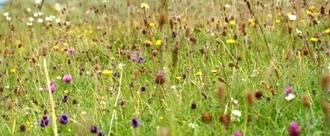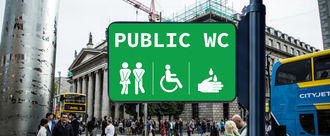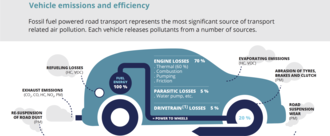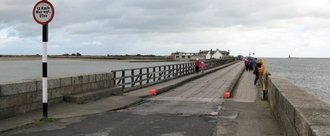- Featured
- Animal Rights
- Anti-racism
- Arts & Culture
- Children
- Climate
- Corporate accountability
- Crime
- Disability rights
- Economic
- Education
- Environment
- Food and Sustainable Production
- Gender Equality
- Governance and Transparency
- Health
- Housing
- LGBT Rights
- Mental health
- Northern Ireland
- Planning
- Privacy and Data Protection
- Rural Inequality
- Social Justice
- Trade
- Transport and Infrastructure
- Workers' Rights
- More
-
Say No to Mow in Co. KildareDuring this pandemic, many of our green areas have been allowed to grow wild, with no council mowing ongoing. Green areas have been allowed to flourish, so that we have yellows, purples, blues, whites, as well as lush green grass. When council workers are allowed to return, we want to keep wild the areas that don't require mowing (e.g. grass verges, fields in which only the edges are walked).105 of 200 SignaturesCreated by Sorcha Grisewood
-
Say No to Mowing in DublinDuring this pandemic, many of our green areas have been allowed to grow wild, with no council mowing ongoing. Green areas have been allowed to flourish, so that we have yellows, purples, blues, whites, as well as lush green grass. When council workers are allowed to return, we want to keep wild the areas that don't require mowing (e.g. grass verges, fields in which only the edges are walked).155 of 200 SignaturesCreated by Paul Noone
-
Say no to mow in Howth, Sutton, BaysideDuring this pandemic, many of our green areas have been allowed to grow wild, with no council mowing ongoing. Green areas have been allowed to flourish, so that we have yellows, purples, blues, whites, as well as lush green grass. When council workers are allowed to return, we want to keep wild the areas that don't require mowing (e.g. grass verges, fields in which only the edges are walked).25 of 100 SignaturesCreated by Shae Flanagan

-
Say No to the Mow in KilkennyI want the council to protect the flowers, bugs and bees which have benefitted greatly in the areas which have been allowed to grow naturally. These also benefit the birds which feed on insects. Please allow hedgerows to grow higher and wider to support larger amounts of wildlife40 of 100 SignaturesCreated by Martin Rochford
-
Say No to Mow in Co. MeathWe have an opportunity to let previously mowed areas rewild and increase biodiversity to create better amenities for all of us. During this pandemic, many of our green areas have been allowed to grow wild, with no council mowing ongoing. Green areas have been allowed to flourish, so that we have yellows, purples, blues, whites, as well as lush green grass. When council workers are allowed to return, we want to keep wild the areas that don't require mowing (e.g. grass verges, fields in which only the edges are walked). Letting previously managed areas rewild will save the council money and the maintenance budget can be used elsewhere for other social initiatives. The benefits go far beyond the rewilded areas. How the COVID-19 Pandemic lockdown has helped biodiversity in the media. https://www.theguardian.com/environment/2020/may/20/rare-uk-wildlife-thriving-in-lockdown-reveals-national-trust?utm_term=RWRpdG9yaWFsX0dyZWVuTGlnaHQtMjAwNTI3&utm_source=esp&utm_medium=Email&CMP=greenlight_email&utm_campaign=GreenLight64 of 100 SignaturesCreated by Hugh McElveen
-
Say NO to the Mow Fingal County Council.During this pandemic, many of our green areas have been allowed to grow wild, with no council mowing ongoing. Green areas have been allowed to flourish, so that we have yellows, purples, blues, whites, as well as lush green grass. When council workers are allowed to return, we want to keep wild the areas that don't require mowing (e.g. grass verges, fields in which only the edges are walked).38 of 100 SignaturesCreated by Sandra Sweetman
-
Say No to Mow in Co. MayoDuring this pandemic, many of our green areas have been allowed to grow wild, with no council mowing ongoing. Green areas have been allowed to flourish, so that we have yellows, purples, blues, whites, as well as lush green grass. When council workers are allowed to return, we want to keep wild the areas that don't require mowing (e.g. grass verges, fields in which only the edges are walked).40 of 100 SignaturesCreated by Brian Dove
-
Dublin's Health Emergency We need public toilet & hand washing facilities.My name is Richard Hanlon a co-owner of Busyfeet & Coco Cafe Dublin's oldest Fair-trade Cafe on South William street established in 2001. My concern is the lack of availability of public toilets in Dublin's city centre currently and into the future, with only 2 public toilets operational at Connelly & Hueston stations for a city of 650k people at this time. The current crisis has accentuated the urgent issue of the city’s poor hygiene infrastructure which will have an adverse effect on both public health and the survival of city centre commercial areas. Under the road map to reopen Ireland’s society and economy we will move from Phase 1 to Phase 2 on June 8th. This will mean significantly increased movement of citizens and an influx to the city which will be a major event within Dublin. This also will be a key economic turning point for the Dublin city center commerce, but due to ongoing restrictions there will be no accessible toilet or handwashing facilities for the public to use till Phase 3 June 28th. When some hospitality and retailers could allow access to their loos. As an SME operator of coffee shops in both the city centre and suburbs, I am acutely aware of my customers requirement for easily accessible toilets. It is also very clear that the demands between the city and suburbs are vastly different during these times. People using suburban hospitality venues such as neighbourhood cafes for takeaway are within easy access of their own homes and bathroom facilities. The 20 days period between Phase 2 & 3 will be a pivotal time for businesses in the city, who badly need to reopen and help kickstart the economy. The “No Place to Go” feeling will be a negative consequence of having no temporary public toilets available from June 8th in Dublin city centre, making returning custom much less unlikely ‘A first impression is a lasting impression to a customer’. In a survey more than half agreed that the lack of public toilets stopped them from going out as often as they would like. Any further loss to future trade in the coming months in the city centre will be devastating economically, pushing most businesses to bankruptcy. The ‘Urinary leash’ will not only hold back all of us from venturing into the city center but it will hold back the country. There have been too many years of debating and deliberating about public toilets and in 2018 the Green Party hailed the achievement of 300k allocation of funds for public toilets, but this was never used and on the 25th May 2020 meetings with DCC called for temporary public toilets to be facilitated ahead of Phase 2 June 8th, but no budget or allocation could be agreed. Why is it so difficult to talk toilets in a modern age? Dublin is Ireland’s economic engine and 250,000 people work in Dublin 1 and 2 alone. On average, 300,000 people visit Dublin city centre each day, but with the expected drop in footfall due to working from home requirements, reduced transport capacity and social distancing the hospitality sector alone is looking to operate at a maximum of c.45% capacity. We could be looking at up to 150,000 less people a day, which will mean the closure of many. Without the hospitality sector there will be no adequate toilet facilities within Dublin City, so we must come up with a solution for both short term and long term so we can maintain Dublin City as an attractive destination. Who will return to the city centre, when they cannot find toilets and handwashing places during this COVID 19 crisis? Would you? Without people, we have no commerce and Dublin has no future. Dublin City Council has to spend more than a penny now and act for the people of Dublin, so let's see them make a positive move soon and save our Dublin city’s heart from dirt, dereliction and disintegration. City councillors and local politicians are eager to promote the rapid implementation of pedestrianisation of central zones and push for increased cycling as an important step to our future, even during this current health emergency. However, we should be reminded of our past where cycling and public toilets were commonplace and interlinked as we travelled further from our home privies. Does the council want to add to the increased unsanitary practices which are currently taking place in the city? Does the council want to force the public into a situation in which they are unable to wash their hands, when the HSE & our Taoiseach are telling us that it is essential to public health? DCC need to act swiftly or further compound the the ability of the city commercial areas to survive.654 of 800 SignaturesCreated by Richard Hanlon
-
Prevent CO2 emissions from vehiclesIn recent years, a joint effort to reduce CO2 emissions from cars has been appreciated. Production companies are bringing less polluting models to the market, national governments establish maximum emission limits and insurers encourage the purchase of ecological cars by offering special policies. However, reducing CO2 emissions is everyone's job. Sign up to this petition and just walk or cycle for one day and if enough of us do this, then we will significantly help our deteriorating planet. If successful this event can become yearly and hopefully more and more people can and do join in.7 of 100 SignaturesCreated by Slava Digriz

-
Say No to the Mow in Co. MonaghanDuring this pandemic, many of our green areas have been allowed to grow wild, with no council mowing ongoing. Which is great! Green areas have been allowed to flourish with flowers growing through them. Widespread population declines of bees and other pollinators from habitat loss are a growing concern. However, spontaneous flowers like dandelions and clover can provide pollen and nectar sources throughout the growing season....... Therefore, please don't mow, don't spray, let them grow!368 of 400 SignaturesCreated by Fridays for Future Monaghan
-
Safe Access to Bull IslandThis amenity is very important and has been enjoyed by thousands of people during COVID-19 restriction as a safe place for recreation to walk and cycle with plenty of space for physical distancing. With the lifting of car restrictions onto the Causeway and the Wooden bridge of 18th May it will no longer be possible for the majority of people of all ages to continue to enjoy this amenity safely. Bull Island is an important protected biosphere and it should be kept free from air pollution. It is the stated aim of Dublin City Council to encourage cycling and walking.1,676 of 2,000 SignaturesCreated by Donna Cooney
-
Make Wooden Bridge & Causeway to Bullwall car free once moreThe health & well being of Dubliners depends on it.348 of 400 SignaturesCreated by Austin Keegan












